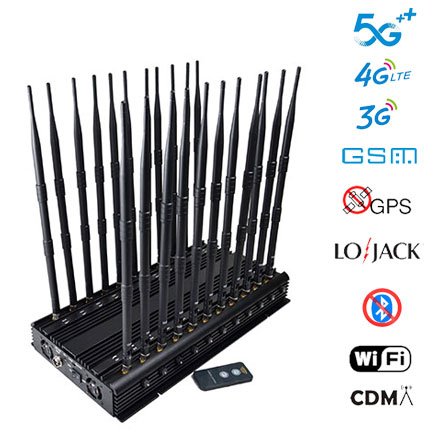Signal jammer is required in many places, but many people do not know how to install mobile phone signal jammers. Some people think that the signal jammer can be directly connected to the power source, while others think that the frequency needs to be adjusted. It is difficult to determine whether a mobile phone signal jammer is working, so let's look at the principle of jamming.

1. Adjacent channel interference.
Adjacent channel interference refers to signal interference at frequencies adjacent to the used signal frequency. The adjacent frequency interference is caused by the ideal connection, which causes the signal of the adjacent frequency to leak into the transmission bandwidth.
2. The near-far effect.
If the base station of the adjacent channel transmits within a range very close to the user receiver, and the receiver uses the base station signal of the preset channel, this problem will become very serious, which is called the near-far effect.
3. Intermodulation interference.
When two or more signals of different frequencies are applied to the non-linear circuit, the signal output of the new frequency will modulate each other. If the frequency falls within the bandwidth of the receiver's working channel, it will cause interference to the receiver and become intermodulation interference.
4. Block interference.
Any receiver has a certain receiving dynamic scale. When the interference signal outside the frequency band is strong to a certain extent, and the received power exceeds the larger power level promised by the receiving dynamics, the receiver will be completely blocked, thereby affecting the receiving function of the system. This interference is called blocking interference. Blockage will cause the receiver to fail to work normally, and long-term blockage may cause the receiver's function to decline.
5. Spurious interference.
Due to the roll-off characteristics of the emission filter, there will always be a certain amount of out-of-band radiation, which is what we usually call emission spurious. Spurious interference due to emission is called spurious interference.
Interference between mobile communication systems.
1. Internal interference: The CDMA transmitted signal acts directly on the GSM receiver as in-band noise directly or by means of intermodulation, thereby reducing the sensitivity of the GSM receiver. This interference is divided into emission spurious interference and intermodulation interference;
2. Out-of-band interference: When the out-of-band interference is strong enough, it will cause the receiver to be completely blocked, thereby affecting the receiving function of the GSM system. This interference is also called jam interference.
The use of mobile phone signal jammer is convenient for our lives, but its signal is easily interfered, so we still need to adjust its frequency.
